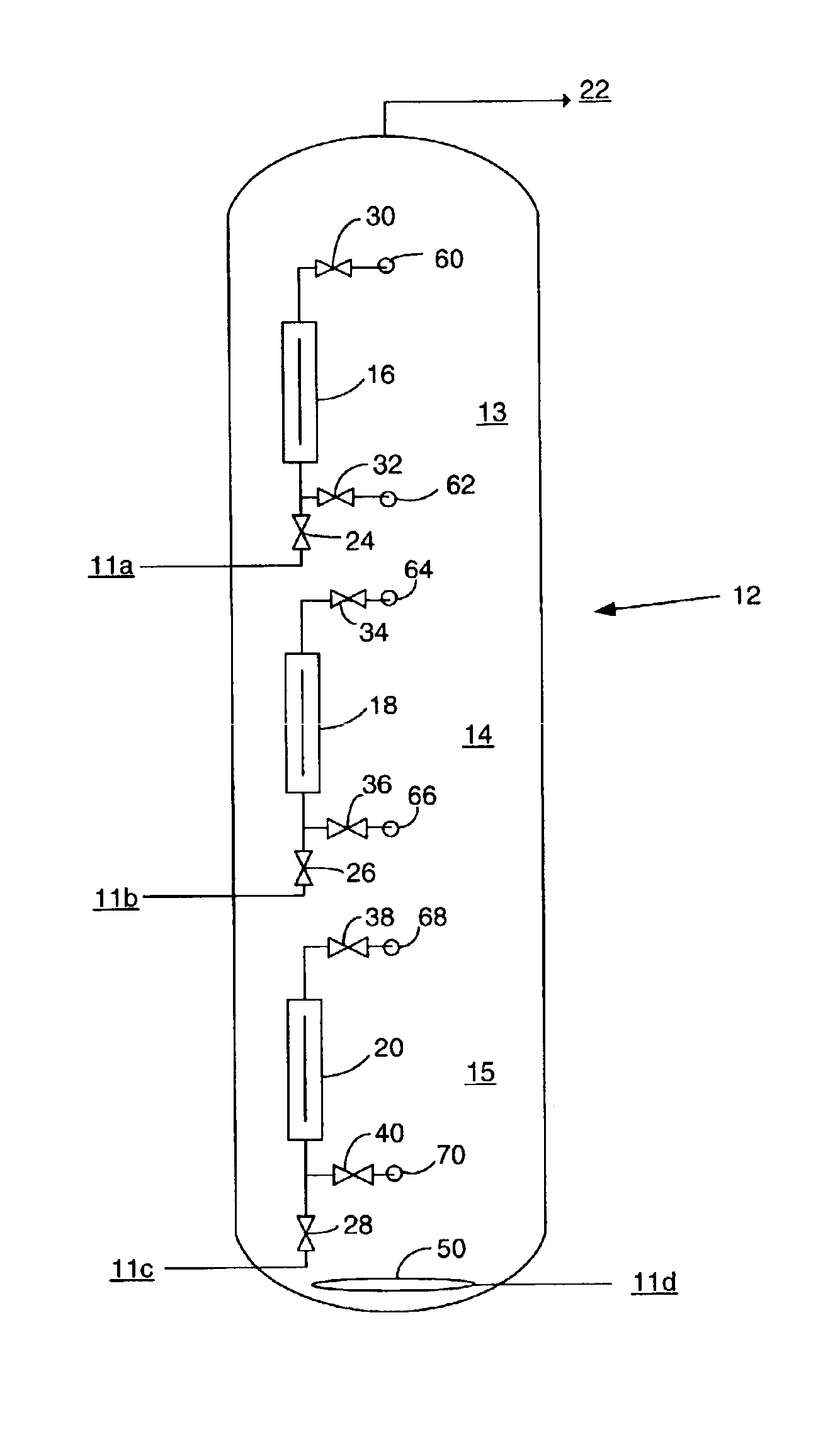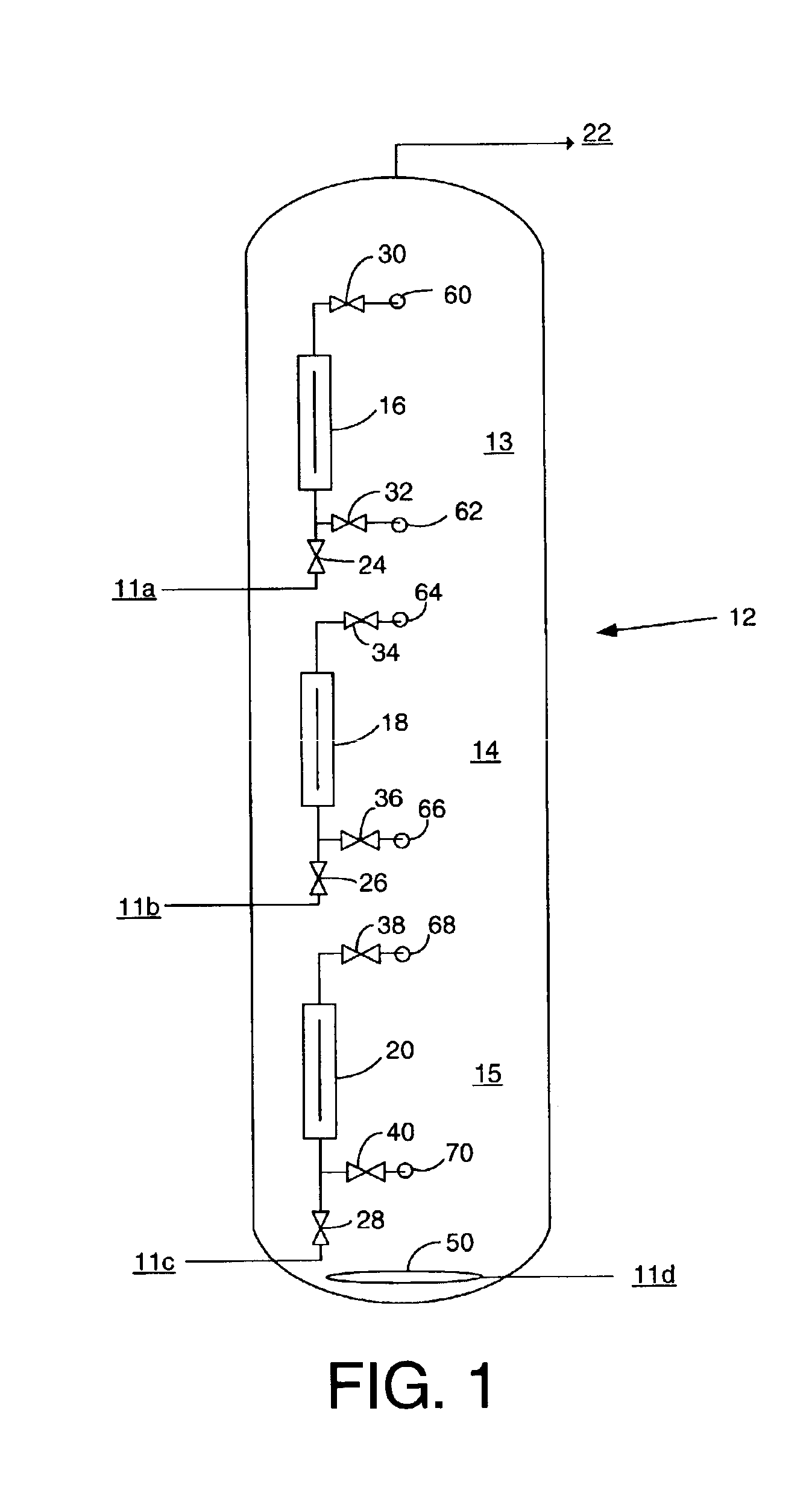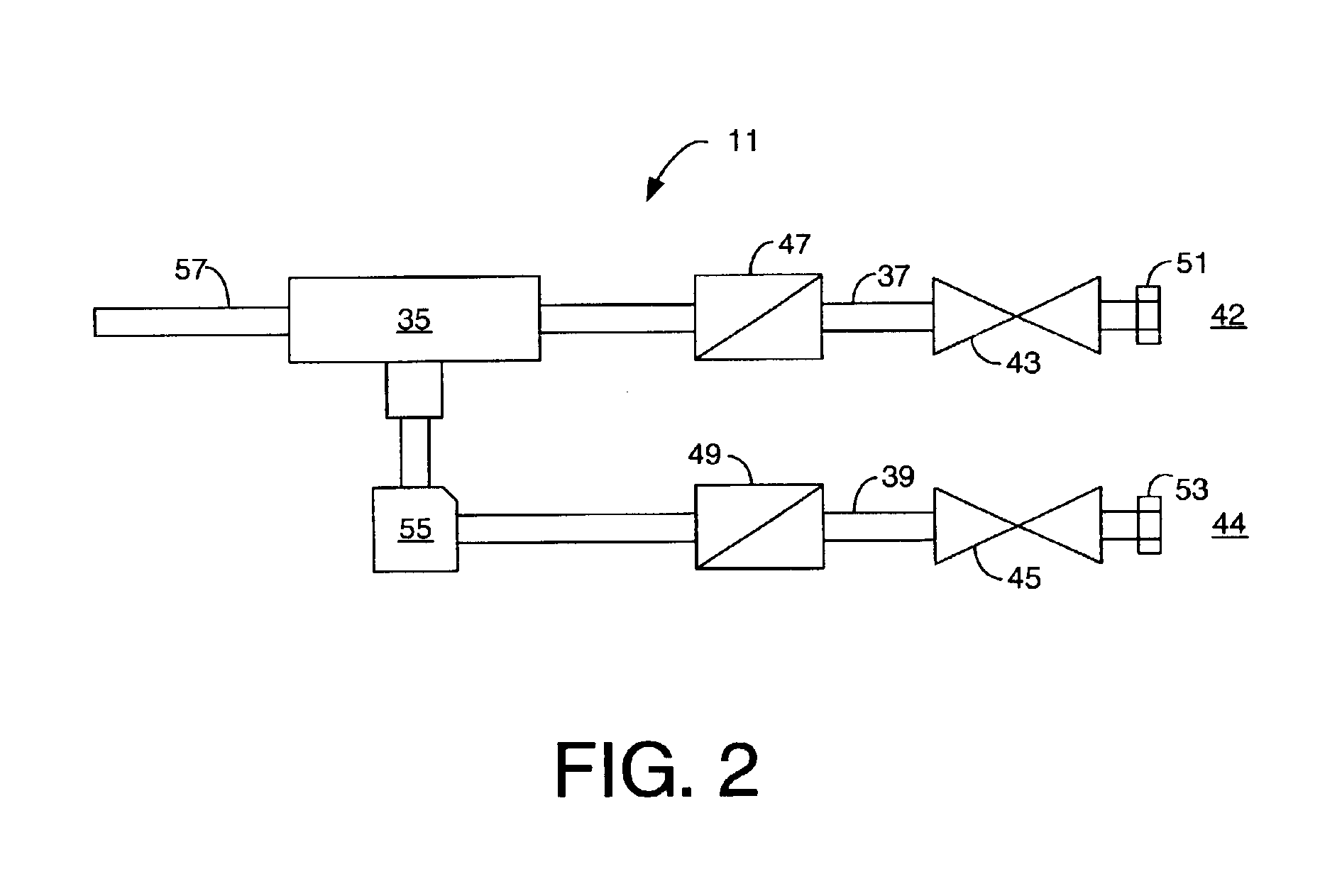Method of cleaning vessels in a refinery
a technology of cleaning vessels and refineries, applied in the direction of cleaning processes and equipment, cleaning using liquids, lighting and heating equipment, etc., can solve the problems of irreversible loss of revenue, significant affecting downstream applications and costs, and affecting the efficiency of refinery cleaning, so as to accurately control the volumetric ratio of chemical vapor and steam.
- Summary
- Abstract
- Description
- Claims
- Application Information
AI Technical Summary
Problems solved by technology
Method used
Image
Examples
Embodiment Construction
[0034]The present invention solves the problems present in the prior art methods.
[0035]Less cost and more regular cleaning is possible because the present invention enables vessels and supporting equipment to be cleaned much more quickly than with the prior art methods which required that the vessel be exposed to the atmosphere and then manually cleaned. Because the equipment is cleaned much more quickly, the refinery is able to boost efficiency by minimizing downtime during cleaning.
[0036]In addition to improving overall efficiency, the present invention is also more environmentally friendly. First, before the present invention, refineries would continue to operate heavily fouled equipment in order to avoid the expense of a complete shut-down. The selective cleaning methods of the present invention avoid this dilemma—by enabling more frequent cleanings. Also, because the equipment is cleaned more often, it operates more efficiently. This reduces the amount of heat / energy required t...
PUM
 Login to View More
Login to View More Abstract
Description
Claims
Application Information
 Login to View More
Login to View More - R&D
- Intellectual Property
- Life Sciences
- Materials
- Tech Scout
- Unparalleled Data Quality
- Higher Quality Content
- 60% Fewer Hallucinations
Browse by: Latest US Patents, China's latest patents, Technical Efficacy Thesaurus, Application Domain, Technology Topic, Popular Technical Reports.
© 2025 PatSnap. All rights reserved.Legal|Privacy policy|Modern Slavery Act Transparency Statement|Sitemap|About US| Contact US: help@patsnap.com



